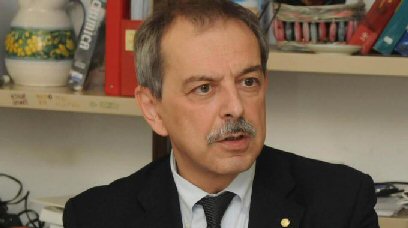Dario Braga, the director of scientific research at the University of Bologna, has clarified several points regarding the university’s official relationship with Andrea Rossi, inventor of the Energy Catalyzer.
First, Braga has given New Energy Times a more precise timeframe for how long it will wait until Rossi activates the research contract to study his Energy Catalzyer. The research contract, which was signed six months ago, becomes active only when Rossi makes his first payment to the university.
Second, Braga explained why the university considers its scientists not to have “carried out” any E-Cat experiments and why they have only “attended as observers to E-Cat experiments.”
Braga told “7 Gold News TV Magazine” in Italy on Nov. 27 that the university will not wait much longer for Rossi to make the first payment.
“The Rossi contract must start soon; otherwise, the University of Bologna can withdraw from the contract,” Braga said. “It must be understood that the period can be a few weeks, maybe a few months, but for sure not years.”

Dario Braga, Photo Courtesy Il Resto Del Carlino
New Energy Times asked Braga yesterday whether the university had set a specific deadline for the first payment.
“The deadline for this is mid-January, and, as far as I know, an extension is unlikely,” Braga wrote.
On Nov. 11, New Energy Times published a news report based on the Nov. 5 press release from the university, titled “E-CAT: UNIVERSITY OF BOLOGNA IS NOT INVOLVED.”
New Energy Times asked Braga yesterday for a clarification of the involvement of professor Giuseppe Levi, who organized the Jan. 14, 2011, press conference for and demonstration of Rossi’s device, wrote the press release for the event, performed calorimetric measurements for Rossi’s device, wrote and distributed a scientific report of his calorimetry, worked with Rossi to run another experiment on Feb. 10 for 18 hours, reported results of that experiment to the news media, and participated in another Rossi experiment on April 3, 2011.
New Energy Times also asked Braga for a clarification of the involvement of professor Mauro Villa and student David Bianchini, each of whom had written and distributed scientific reports on behalf of Rossi.
In a New Energy Times video interview, Rossi had stated that Bianchini was a professor at the university and that Rossi was paying Bianchini a consulting fee to take radiation measurements of Rossi’s device.
Braga explained the university’s perspective to New Energy Times today in an e-mail.
“Faculty of the University of Bologna are not part of the Rossi device evaluation until the university can start with its own experiments,” Braga wrote. “There is nothing we can do to prevent our scientists from attending outside demonstrations at a private location or to prevent them from providing their own opinions as researchers on a scientific experiment. These behaviors are not illicit and do not carry any formal or informal implication on the level of involvement of the University of Bologna on the matter.
“Bianchini is not an employee of our university but a student and should not have used the Department of Physics as his affiliation in writing the safety report. We are investigating this matter further. Professor Villa’s and professor Levi’s reports were circulated and prepared long before the contract between Rossi and the Department of Physics was actually signed and were for internal purposes. Once again, these reports do not carry any implication about the involvement of the University of Bologna in Rossi’s demonstrations.”

